Do you have a question about the Carrier 50TC Series and is the answer not in the manual?
Warning about electrical hazards during service or maintenance operations.
Hazards related to unit operation, refrigerant systems, and potential damage.
Hazards from handling refrigerants, including recovery and disposal procedures.
Warning about sharp sheet metal edges and burrs during handling.
Initial site assessment and checks before installation.
Selecting an appropriate location for the unit considering clearances.
Planning the order of installation steps based on unit type.
Modifying the unit for horizontal duct connections if required.
Assembling and installing the economizer hood for outside air intake.
Connecting unit power supply, control wiring, and ensuring tight connections.
Installing 125-volt GFCI receptacles for power access.
Guidelines for selecting and installing thermostats for economizer function.
Connecting external temperature control devices like thermostats and controllers.
Information on accessory electric heaters, their installation, and module types.
Wiring guidance for connecting low-voltage control leads from heater modules.
Operating details for units with the factory-installed EconoMi$er X option.
Information about the OAT sensor and its use with EconoMi$er2.
How to make field connections for accessory sensors and input devices.
Wiring a 7-wire thermostat to the PremierLink controller.
Changing PremierLink controller mode from Sensor to Thermostat.
Monitoring CO2 levels in outdoor ventilation air and wiring the OAQ sensor.
How the smoke detector system implements unit shutdown.
Monitoring supply fan operation using a differential pressure switch.
Using a remote timeclock to override occupancy schedules.
Connecting the accessory Power Exhaust contactor coils.
Connecting the PremierLink controller to the bus using daisy chain.
Details on different types of SPT sensors and their wiring to RTU Open controller.
Monitoring space CO2 levels and wiring the IAQ sensor to RTU Open controller.
How the humidistat provides RH data to the RTU Open controller.
How smoke detector configuration works with RTU Open controller.
Connecting filter status, fan status, and remote occupancy inputs.
Using the Field Assistant software for setup, service, or downloading software.
Interpreting LEDs to diagnose RTU Open controller status and network issues.
Using the enthalpy control accessory with EconoMi$er2 for air management.
Comparing outside and return air enthalpy for control.
Information on factory-installed smoke detectors and their configuration.
Connecting smoke detectors to the Central Terminal Board.
Managing external occupancy control via CTB connection.
Verification items before initiating unit start-up procedures.
Checks for electrical, temperature, and pressure parameters during start-up.
Procedures for checking CTB, humidistat, and unit operation in cooling mode.
Recording suction pressure, discharge pressure, and temperatures.
Observing system behavior during high-latent and dehumidify modes.
| Brand | Carrier |
|---|---|
| Model | 50TC Series |
| Category | Air Conditioner |
| Language | English |

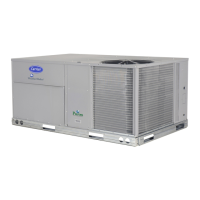


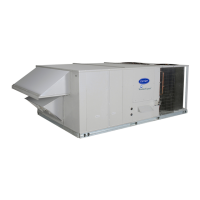

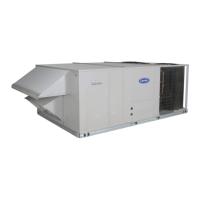



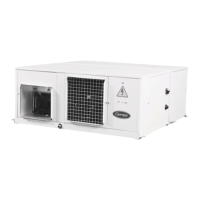
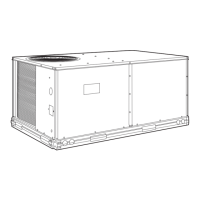
